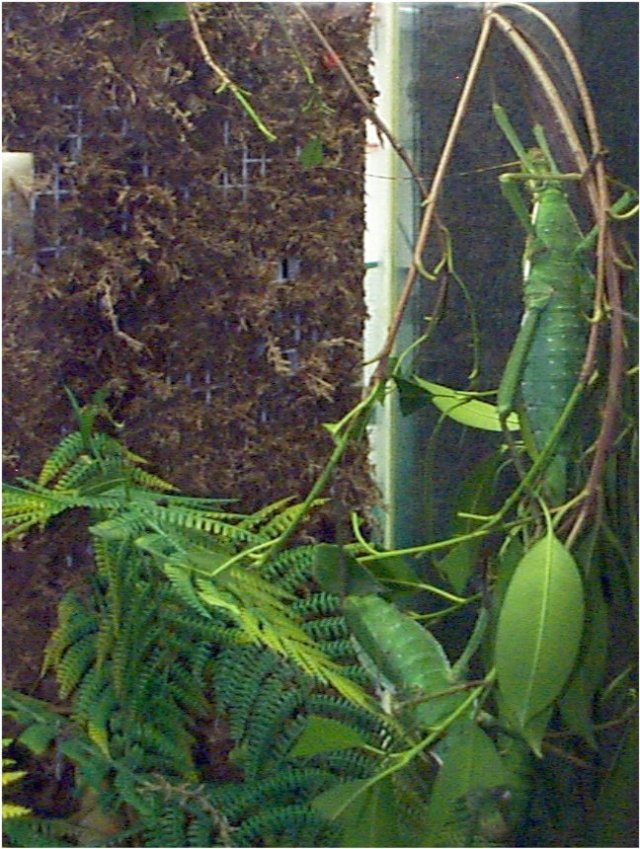General information:

-
KEEPING- The terrarium should at least have the size of 30 x 30 x 40 cm.
Temperature of 22- 30° Celsius (74 - 86° F). As the female lays
the eggs in the ground, floor covering (sand) is needed.
-
DEVELOPMENT- Egg incubation 7- 10 months, larval 10- 12 months.
They hatch in slightly damp conditions. The nymphs go through a series
of molts getting bigger each time before becoming adults.
-
MOLTING- Females’ bright green coloring develops after the 4th or 5th molt,
and the males wings appear with the final molt. The sexes of nymphs can
be distinguished by the presence of a pointed ovipositor (egg laying tube)
in females.
-
The males are able to fly, whereas the females have wings but are unable
to fly.
-
From the order Phasmida
-
Most phasmids have a thorax that can shoot out a milky, smelly, corrosive
liquid against predators. This comes in handy because they are too slow
moving to have any other way to defend themselves.
-
Some Phasmids are used in laboratories for tests on hypnosis, color change,
regenerative properties and parthenogenesis.
-
Females lay anywhere from 90 to 200 eggs, then die. Some smaller males
may live twice as long as females.
-
The common enemies of the walking sticks are lizards, birds, spiders, and
parasitic wasps and flies that develop inside the body cavity of the phasmids
-
The Jungle Nymph Stick is one of the heaviest insects. In Malaysia they
are often kept by people who feed them guava leaves and use the droppings
to make tea.
|